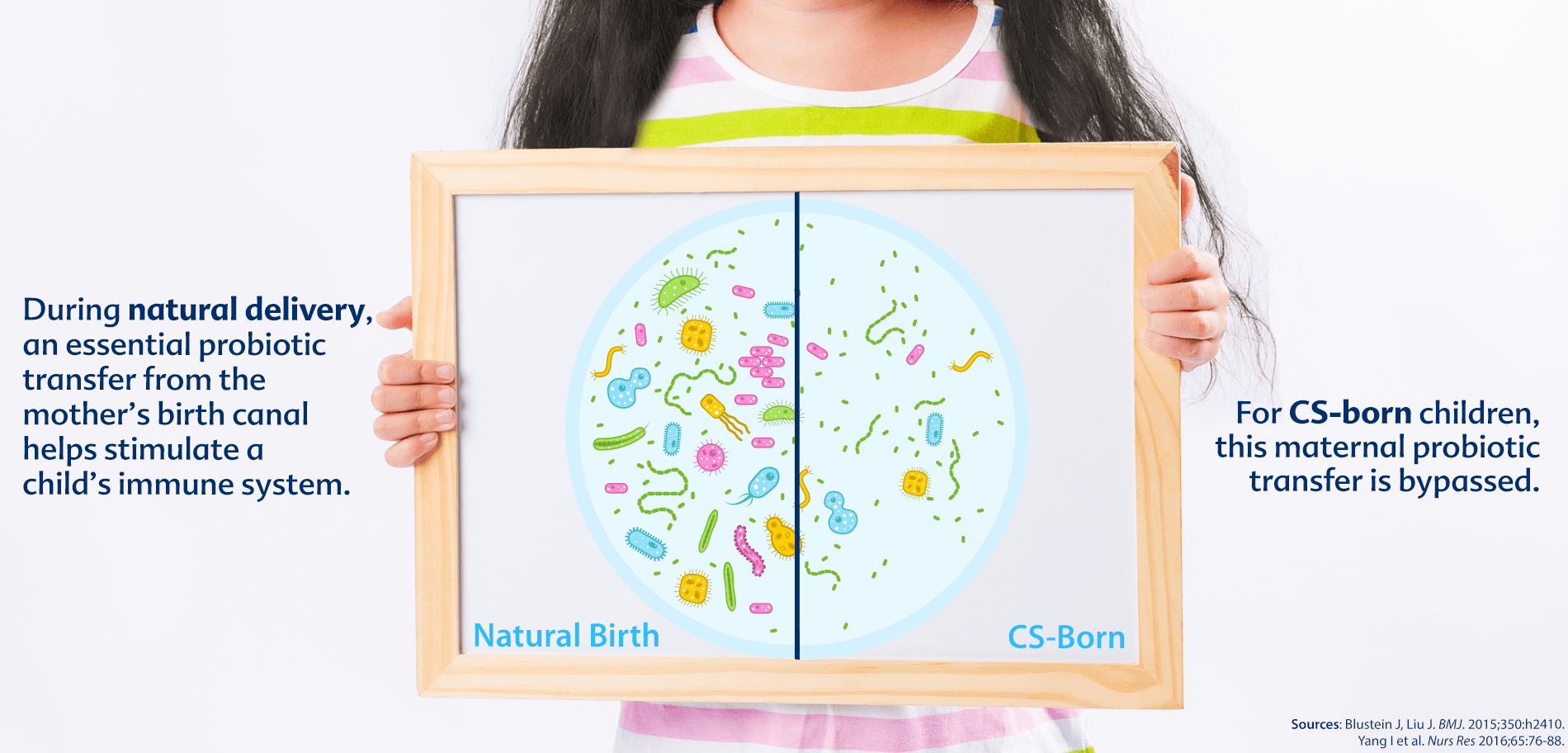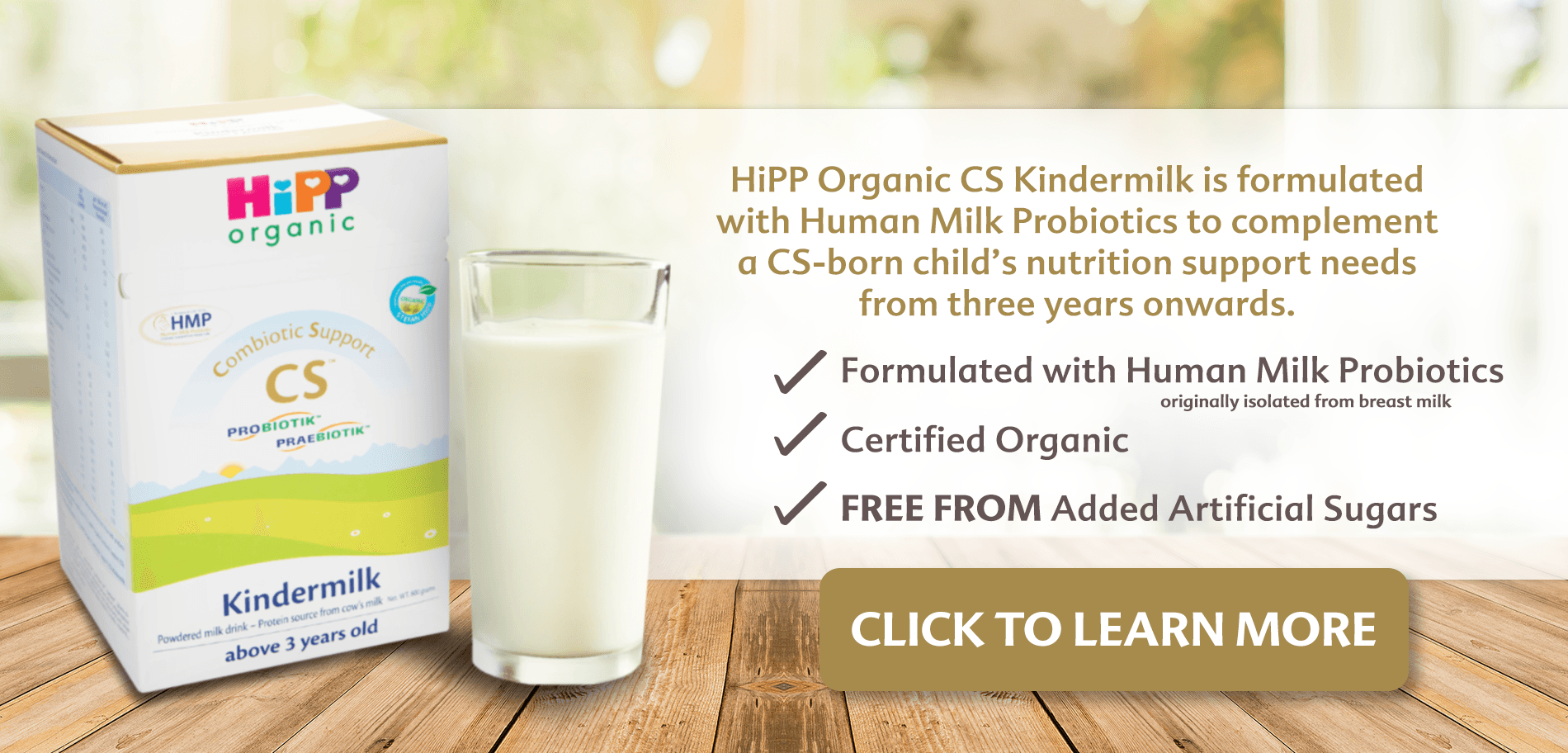For related articles on CS-born children, you may be interested in the following:
What Is the Right Milk for Your CS-Born Child?
Human Milk Probiotics: Not All Probiotics Are the Same
What are Human Milk Probiotics?
Human Milk Probiotics are microorganisms that help populate the digestive tract by forming a barrier against harmful bacteria. These “friendly” microorganisms aid in the production of antibodies that help fight infection. Research also shows that the gastrointestinal tract and the brain are connected through what is referred to as the gut-brain axis. This connecting nerve allows probiotics to facilitate signals to the brain and vice versa. As a result, probiotics are able to positively influence cognition, memory, verbal learning, and overall brain function.
Human Milk Probiotics also help promote good digestion by improving the absorption of nutrients and preventing common digestive problems. Unabsorbed nutrients are often the cause of constipation, colic, and flatulence.
Click HERE to learn more about Human Milk Probiotics.
Are all probiotics the same?
Not all probiotics are the same. There is a wide variety of probiotics that function in different ways. Ultimately, the ability to survive the gastric acid and oxygen-rich environment of the stomach determines probiotic survivability.
The choice of probiotics to support the needs of CS-born children is critical. Human Milk Probiotics are what nature intended to help build the immune system of a child. Human Milk Probiotics are clinically proven to have a high survivability rate, resisting both gastric acid and oxygen in the stomach.
What if breastfeeding is not possible or not an option?
If breastfeeding is not possible, check with your doctor before you decide on an alternative feed for your little one. While there are many different types of probiotics, not all probiotics are the same. Some probiotics do not survive beyond the stomach and are therefore rendered ineffective. Other milk products may also contain a type of probiotic, however, they may not be the right probiotic as intended by nature. Choose a milk product for your CS-born child that contains Human Milk Probiotics to support early brain development, immune system development, and improve digestion and absorption of nutrients.
Medical Disclaimer: The information included in this material is for informational purposes only. Always seek medical advice for any concerns about health and nutrition.





